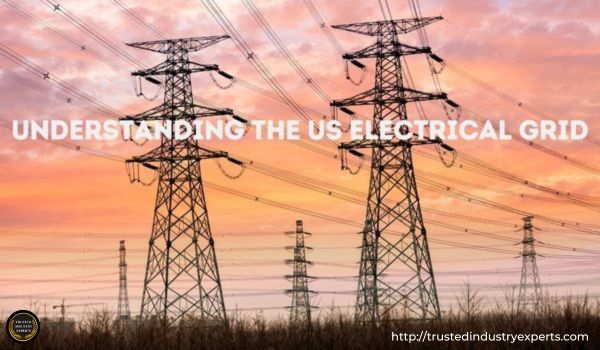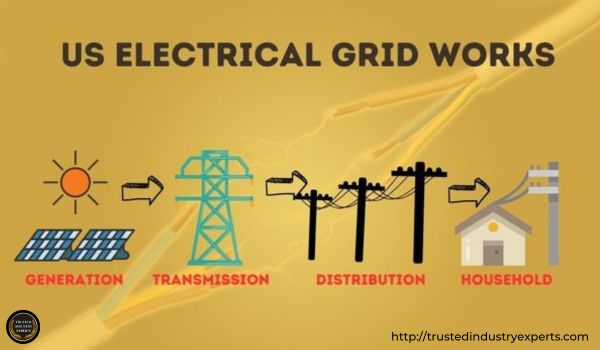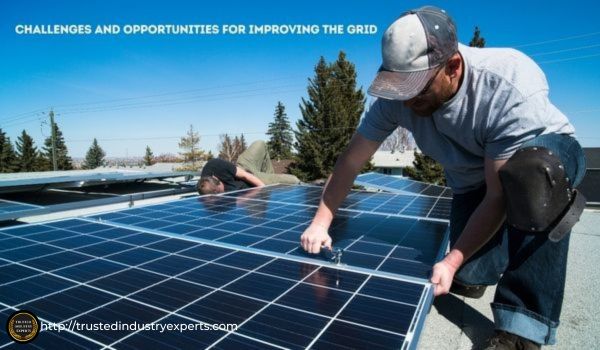
Understanding the US Electrical Grid: A Comprehensive Guide
The US electrical grid is a complex network of power plants, transmission lines, and distribution systems that supplies electricity to homes and businesses throughout the country. Despite its critical importance, many people don’t fully understand how the grid works or the factors that impact its efficiency. In this article, we will provide a comprehensive guide to the US electrical grid and its operations, so that you can have a better understanding of this critical infrastructure.
The US electrical grid is a complex system of power plants, transmission and distribution lines, and distribution systems. The transmission lines transport electricity from the power plants to high voltage power substations, where the electricity is then transformed into lower-voltage electrical output and sent through the distribution lines to homes and businesses.
The distribution system also helps ensure that new transmission lines gives a good electricity transmission in resulting efficient equal distribute power in a residential home.
How the US Electrical Grid Works

The US electrical grid is a interconnected system of power plants, transmission lines, and distribution systems that work together to supply electricity to homes and businesses across the country. Electricity is generated at power plants, typically using fossil fuels such as coal, natural gas, or oil, or renewable sources such as solar, wind, or hydro power.
The electric power grid is an essential part of the electric power industry, allowing electricity to be generated and distributed to homes and businesses across the country. It is crucial for efficient electrical use, as it can prevent surges and blackouts, which can cause significant disruption. By properly managing the electrical power grid, the electric power industry ensures that electricity is good and has a grid reliability and system reliability.
The electrical power grid is essential to the electric power industry, as it allows electricity to be distributed across the country with minimal disruption. The electric power industry ensures that electricity is properly managed through the electrical power grid, which helps ensure efficient electrical use and prevents surges and blackouts. The electric power industry also monitors the performance of the electrical power grid which carry electricity towards household of electricity customers.
The electric power grid works is essential to the efficient production of electricity using solar power. It is a complex network of transmission and distribution systems, consisting of power plants which generate electricity, high voltage power substations which transform it into lower-voltage electrical output, and distribution lines which carry electricity to households.
The electric grid ensures that electricity is properly managed, allowing to produce electricity to independent power producers and prove electric grid has good power system which features system reliability, and good distribution system.
The electricity is then transmitted over long-distance transmission lines to substations, where it is transformed into a lower voltage for distribution over shorter distribution lines to homes and businesses.
Diagram of US Electrical Grid
The US electrical grid is divided into three interconnections, known as the Eastern Interconnection, the Western Interconnection, and the Texas Interconnection, each of which operates independently but can exchange power with the others if needed.
The Diagram of US Electrical Grid is a complex network of power plants, transmission lines, and distribution systems that ensure electricity is reliably produced, transmitted and consumed. The long distance power lines are critical for transporting electricity from the power generation sites to homes and businesses across the country. If there is a power outage in one area, these long distance power system can reach electricity customers.
Improving the Grid is an important priority for the US electrical industry. In recent years, efforts have been made to modernize the grid by installing more advanced technologies that reduce power outages, increase reliability, and improve energy efficiency.
One key improvement is the installation of high voltage power lines, which can transport larger amounts of electricity more efficiently over electricity generation.
This allows the grid to maintain a balance of supply and demand, even in the event of a power plant failure or other disruption.
Challenges and Opportunities for Improving the Grid

Despite its critical importance, the US electrical grid faces a number of challenges, including aging infrastructure, increasing demand for electricity, and the integration of renewable energy sources.
In order to improve the US electrical grid, high voltage transmission lines need to be upgraded or replaced in order to meet rising demand and accommodate renewable sources of energy. Additionally, new power plants are needed to provide additional sources of power and reduce reliance on existing plants. Additionally, efforts should be taken to ensure that power outages can be quickly identified and solving by installing solar panels.
To address these challenges and improve the efficiency and reliability of the grid, a number of initiatives are underway, including smart grid technology, the deployment of energy storage systems, and the development of microgrids.
Smart grid technology –
which uses advanced sensors, communication networks, and control systems to manage the flow of electricity, is seen as a key solution to improving the efficiency and reliability of the grid. By using real-time data to better match supply and demand, smart grid technology can help to reduce energy waste and improve grid resiliency.
Importance:
Smart grid technology is becoming increasingly important in order to effectively manage the vast amounts of energy produced by a variety of energy resources. This technology uses sensors, communication networks, and control systems to monitor the flow of electricity across power grids, and can detect changes in real-time. By using this information, smart grid technology can help reduce energy waste
Smart grid technology is an important component of the US electrical grid, as it allows for more efficient management of energy resources. By using advanced sensors, communication networks, and control systems to monitor the flow of electricity, smart grid technology can help ensure that energy produced from renewable sources such as wind and solar are efficiently integrated into the grid. Additionally,
Energy storage systems,
such as batteries and pumped hydro storage, can also play an important role in improving the grid. By storing excess energy generated by renewable sources, these systems can help to smooth out fluctuations in supply and demand, and provide backup power in the event of a power outage.
Importance:
Energy storage systems are becoming increasingly important as a way to improve the reliability of the energy grid. By storing excess energy generated from renewable sources, these systems can help to balance supply and demand and ensure that sufficient electricity is available at all times. Additionally, energy storage systems can provide backup power in the event of a power outage, allowing for continued energy production to supply electricity consumers
Microgrids,
which are small-scale versions of the electrical grid that can operate independently or in conjunction with the larger grid, offer another solution to improving the efficiency and reliability of the grid.
Microgrids offer local, self-contained solutions to improving the efficiency and reliability of electricity supply. They are small-scale electrical grids that can either operate independently or in conjunction with the larger grid, allowing them to provide cleaner, more efficient electricity use. By using advanced energy technologies such as solar panels, battery storage systems, and smart grid.
By allowing communities to generate their own power, microgrids can reduce dependence on the centralized grid, increase grid resiliency, and provide backup power in the event of a blackout.
The US electrical grid is a critical infrastructure that plays an essential role in powering homes and businesses across the country. Despite its importance, many people don’t fully understand how the grid works or the challenges it faces. By providing a comprehensive guide to the US electrical grid and its operations, we hope to increase awareness and understanding of this important infrastructure, and highlight the initiatives underway to improve its efficiency and reliability.



